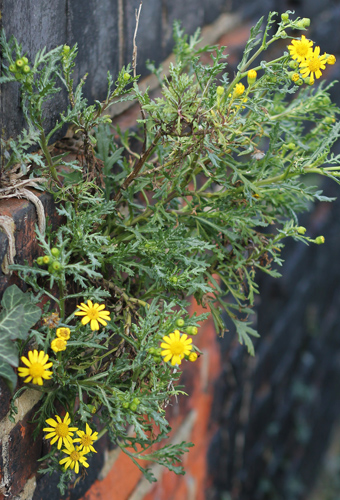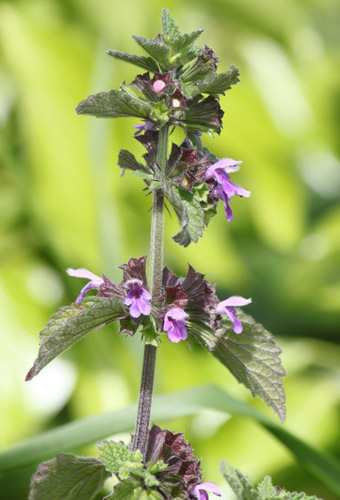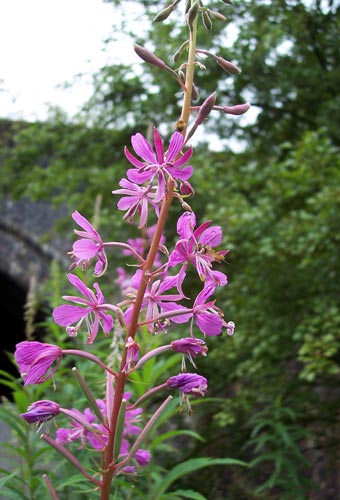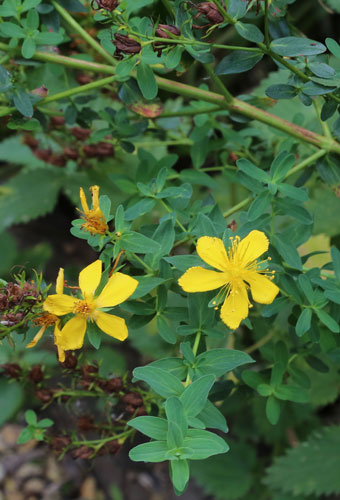Marsh marigold
Marsh marigold, Caltha palustris. Marsh-marigold by a pond provides shelter for frogs and early nectar for insects.

Marsh marigold, Caltha palustris. Marsh-marigold by a pond provides shelter for frogs and early nectar for insects.

Oxford ragwort, Senecio squalidus. A real railway flower. It’s a hybrid between two Senicio species native to Mount Etna that was introduced to the Oxford Botanic Garden in 1690. By the end of the 18th century it grew on almost every wall in and about Oxford. During the Industrial revolution ragwort seed was distributed around the country via the thriving railway […]

Purple dead nettle, Lamium purpureum. Though similar to a nettle in appearance, it is not related, doesn’t sting and is a member of the Mint family. The flowers may be produced throughout the year, including mild weather in winter. This allows bees to gather its nectar for food when few other nectar sources are available. It is also a prominent source […]

Pyracantha. Pyracantha is a genus of large, thorny evergreen shrubs in the rose family Rosaceae. They are native to an area extending from Southwest Europe east to Southeast Asia. They have a white rose flower and resemble and are related to Cotoneaster, but have serrated leaf margins and numerous thorns (Cotoneaster is thornless). On Parkland Walk it is certainly a […]

Red campion, Silene dioica. There are five pinkish petals which are deeply notched at the end, narrowed at the base and all go into an urn-shaped calyx. The nectar of the flowers is utilised by bumblebees and butterflies. Crushed seeds of red campion have also been used to treat snakebites. WT

Rosebay willowherb, Chamerion angustifolium. This species is abundant in wet slightly acidic open fields but it has earned the nicknames ‘fireweed’ and ‘bombweed’ as a result of its tendancy to colonize quickly on burnt ground and bomb sites during World War II. The plant’s rise from a local rarity is closely linked to the expansion of the railway network making it […]

Russian comfrey, Symphytum x uplandicum. Comfrey is a particularly valuable source of fertility to the organic gardener and is used as a compost activator, liquid fertiliser, mulch or potting mixture. Comfreys have been used as traditional medicinal plants in Europe for centuries. Russian comfrey can be considered as a toxic plant and some comfrey products have been banned for human […]

St John’s wort, Hypericum perforatum. This plant, named after John the Baptist, is famous for its medicinal qualities in the treatment of low moods and mild depression. It flowers around the 24th of June, the feast day of St. John the Baptist. Sales of the supplement are banned in France due to concerns about serious interactions with other drugs. WT

Common Valerian, Valeriana officinalis. It bears sweetly scented pink or white flowers that attract many fly species, especially hoverflies. It is consumed as food by the larvae of some butterflies and moths. Valerian has been used as a herb in traditional medicine since at least the time of ancient Greece and Rome. Hippocrates described its properties, and Galen later prescribed […]

Common vetch, Vicia sativa. A member of the pea family, Common vetch is able to make its own nitrates, a special nutrient essential for healthy plant growth.